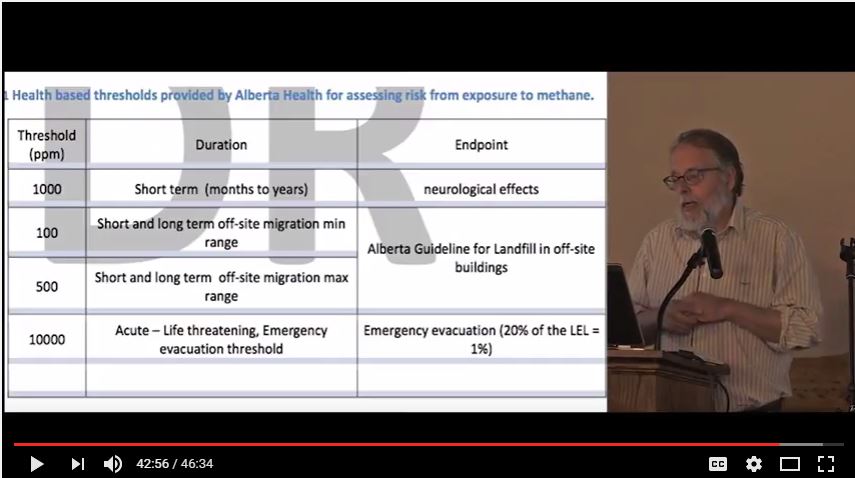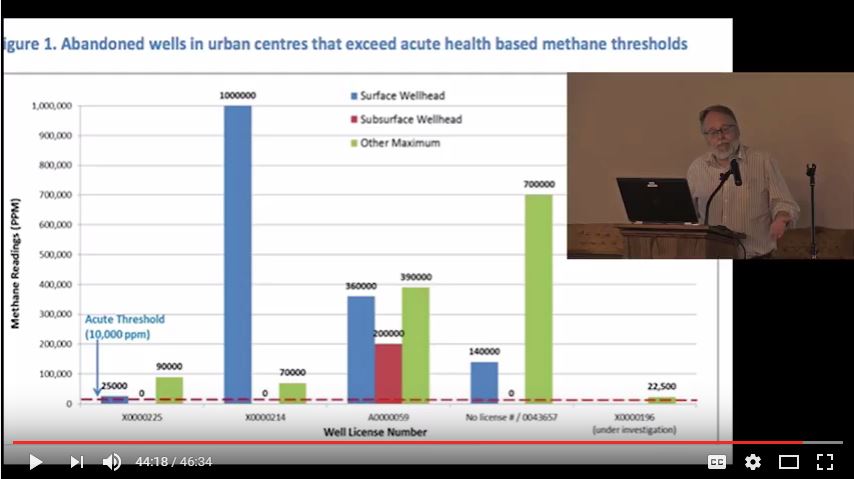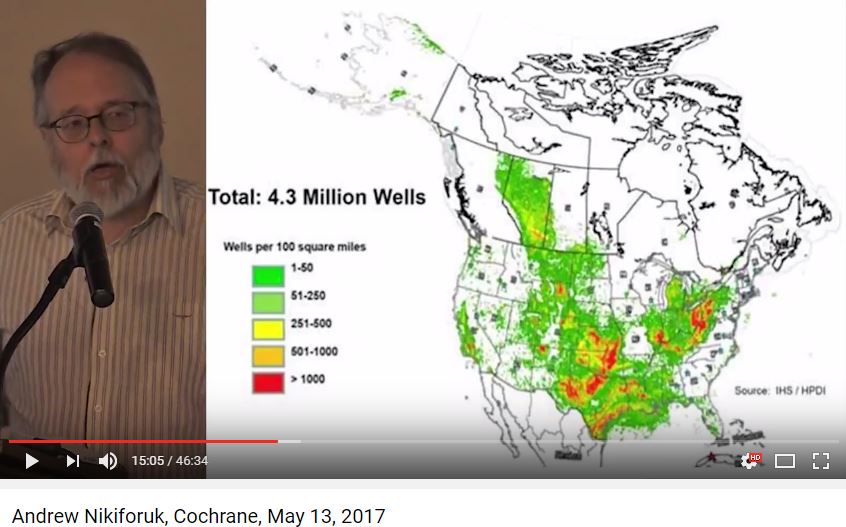In ‘Gasland’ community, new tests revive old drilling debate by The Associated Press, September 2, 2017, National Post
The well water at Ken Morcom and Kim Grosso’s house is laced with so much explosive methane that a Pennsylvania environmental regulator who went there to collect samples this summer decided it would be safer to coast her SUV down the driveway.
Morcom and Grosso want to leave but doubt they could sell a house with tainted water. So, a few weeks ago, they asked the gas driller they blame for polluting their well to buy them out.
“I was hoping they’d fix it. But I’ve given up hope,” said Morcom, 49, who supports drilling but has become disillusioned with Houston-based Cabot Oil & Gas Corp. “Just let us out of the box.”
“The box” is the couple’s 8-acre spread in rural Dimock Township. But Morcom could have been talking about Dimock itself.
A patchwork of homes and farms about 150 miles north of Philadelphia, the community became a battleground for pro- and anti-drilling forces after state regulators found that Cabot — one of the biggest drillers in the vast Marcellus Shale gas field — had contaminated 18 residential wells with methane. Homeowners sued, accusing the company of polluting their water with toxic chemicals and methane. Activists and celebrities descended.
It’s a much quieter place these days. But the questions surrounding Dimock’s groundwater have yet to be resolved — and the federal government is back for the first time in more than five years to investigate ongoing claims of contamination. Public health experts visited 25 homes last month to test for bacteria, gases and chemicals.
The testing has resurrected an old debate about the groundwater in Dimock, whose plight was the focus of the Emmy Award-winning documentary “Gasland.”
State regulators say Cabot still hasn’t fixed the water. Cabot says the methane was there long before it began drilling. It’s an argument that’s been going on for eight years.
Bill Ely, whose house was tested, said his methane-laced well water looks like milk. He now pipes spring water to his house.
[Compare to Methane Milk Water in Canada after Hydraulic Fracturing:
2005: Ernst’s methane and ethane contaminated water after Encana illegally fractured the drinking water aquifer that supplies the Ernst well, and others in Rosebud, Alberta
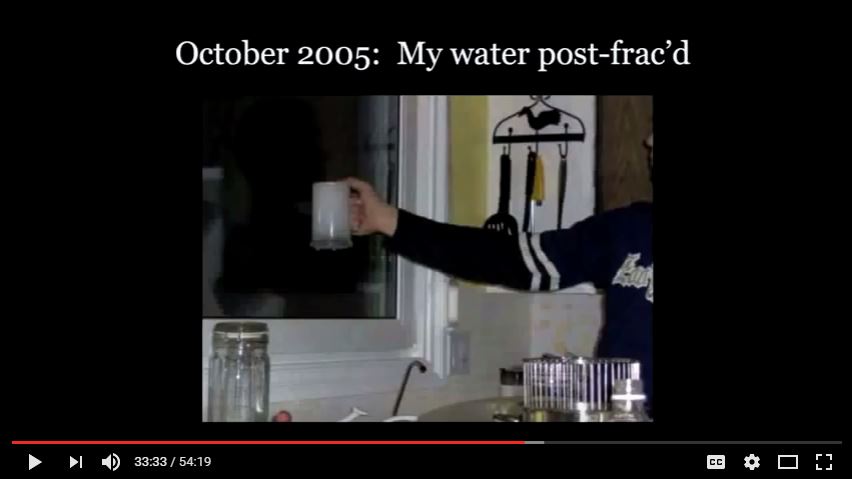
Slide from Ernst presentations
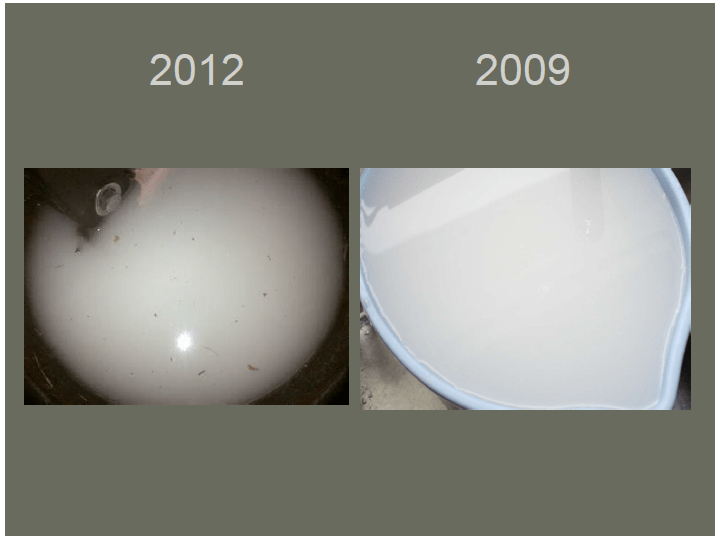
2009 photo of Ernst’s methane (and ethane) contaminated well water in Alberta
2012 photo of a cattle producers methane contaminated well water in Quebec
Slide from Ernst presentation November 19, 2016, Montreal, Quebec
End Compare to Methane Milk Water in Canada after Hydraulic Fracturing ]
“My place that I’ve worked for all my life is worth nothing,” said Ely, 66.
Dimock was the highest-profile case of contamination linked to Pennsylvania’s huge gas drilling industry, but it’s far from the only one.
State regulators have identified 289 cases since December 2007 in which a private water supply was affected by gas drilling, including seven so far this year.
In Dimock, the dispute centres on the extent to which methane was present in the water before Cabot showed up to drill in 2008.
The odourless, colorless gas is common in Pennsylvania groundwater. It can emanate from swamps, landfills, coal mines and gas wells. Methane is not toxic to humans, but at high concentrations it can lead to asphyxiation or cause an explosion.
[Reality Check:
Prior to industrial developments, methane was rarely reported in Pennsylvania groundwater.
Slides from presentation by Andrew Nikiforuk for ACORRDS in Cochrane Alberta
End Reality Check ]
It was an exploding water well on New Year’s Day 2009 that first aroused public attention in Dimock.
Cabot has long insisted the gas in Dimock’s aquifer is naturally occurring, saying its pre-drill testing of thousands of private water wells in the area show a high percentage with methane. Company spokesman George Stark said he views the new testing by the U.S. Agency for Toxic Substances and Disease Registry as a waste of time and taxpayer money, pointing out that another federal agency, the Environmental Protection Agency, tested 64 homes in 2012 and concluded the well water didn’t pose a health hazard.
Critics have said the EPA buckled to industry pressure. The Agency for Toxic Substances analyzed the same data and concluded that 27 of the wells had unsafe levels of contamination. Its 2016 report drew no conclusion about whether gas drilling caused the water to become tainted.
Some residents agree with Cabot.
Lloyd Conrad, 80, said “swamp gas” has always been an issue in Dimock, including at his own house. “Bunch of yahoos,” Conrad said of residents who sued the company in 2009. “They were after this,” he added, rubbing his fingers together.
Still, Conrad wonders whether Cabot’s drilling might have made things worse. The driller pays to refill a large plastic tank on his property, called a water buffalo, that supplies Conrad’s home with water for bathing and washing clothes. Government scientists tested his well in early August.
The Department of Environmental Protection said Cabot has not yet fixed all affected water supplies, nor has it shown that all its gas wells have stopped leaking natural gas into the aquifer. As a result, the agency has refused Cabot’s requests to lift a moratorium on drilling in a 9-square-mile area of Dimock.
Though Cabot hasn’t been able to drill new wells, state regulators did permit the company to begin producing gas from six existing wells in 2012. The state agency has since held Cabot responsible for three additional cases of contamination, though Stark said two of the cases involve homeowners who have long reported gas in their water.
The third case involves Grosso and Morcom, who reported their well water went bad three months after Cabot “fracked” a nearby gas well. Fracking is a method that uses huge amounts of pressurized water, along with sand and chemicals, to extract oil and natural gas from shale.
State regulators held Cabot responsible, though they cited problems with the cementing of the gas wells and said there is no evidence that fracking itself polluted the water.
Cabot installed a third water buffalo on the couple’s property this summer, this one to water their cows.
“After five years of putting up with this,” Morcom said, “we just want out.” [Emphasis added]
[Refer also to:
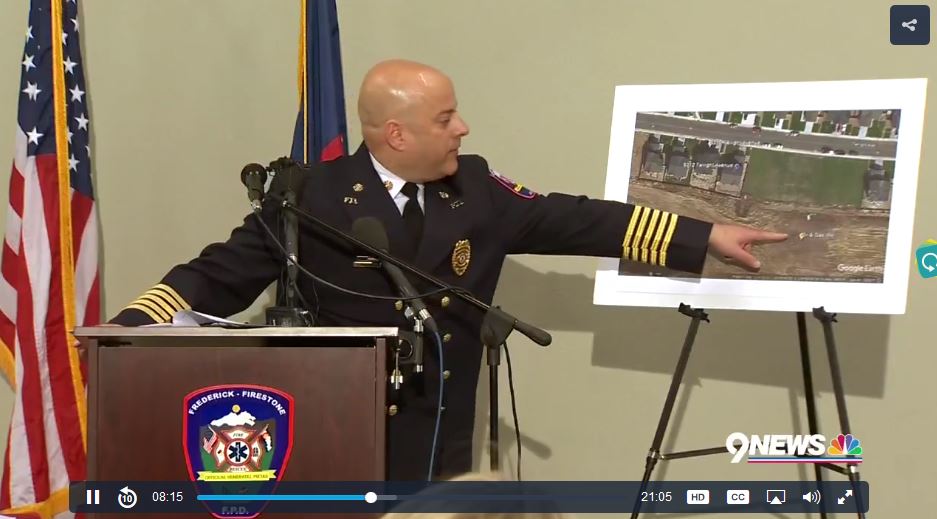
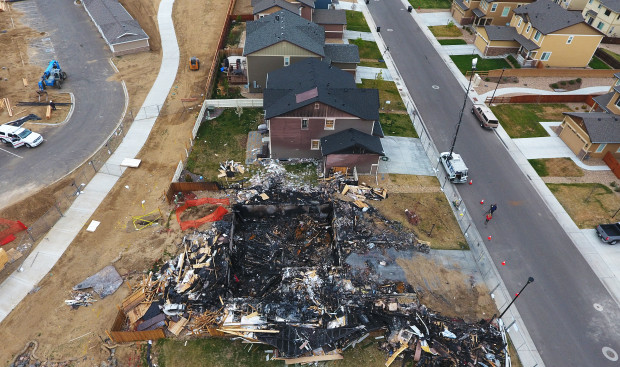
FIRESTONE, CO – APRIL 27: Crews continue to investigate a fatal house explosion on April 27, 2017 in Firestone, Colorado. Anadarko Petroleum plans to shut down 3,000 wells in northeastern Colorado after the fatal explosion. (Photo by RJ Sangosti/The Denver Post)
….Chesapeake eliminated the pre-drill test and said that the post-drill was always the way [the water] was. The EPA cited that case throughout that report, with respect to whether or not fracking is safe for drinking water supplies. And they backed the company’s decision.
… Public Herald has analyzed over 200 cases in five key townships where clusters have occurred to find that PA DEP has nine ways that it systematically keeps water contamination cases off the books. One of theses ways is by simply dismissing clean pre-drill tests [Like Alberta regulators, Encana, and Alberta Research Council did] which is highly unscientific.
Showing you, dear reader, the controversial timeline of the Dimock case would take pages. Instead of rehashing Dimock’s history of being pummeled by industry and abandoned by state and federal government, let us put the corruption and negligence in Dimock’s case in context with thousands of other potential water contamination cases in Pennsylvania – data that’s been covered up and ignored by PA DEP, US EPA, and mainstream media.
The former Ely property sits less than a mile south from another polluted residential property on Carter Road that Cabot bought for $140,000 from Craig and Julie Sautner last year. Cabot demolished the three-bedroom ranch in September and sold the empty lot to a neighbor for $4,000. The new deed includes a clause – called a land covenant — that forbids residential dwellings on the property. Cabot bought both the Sautner and Ely properties through a subsidiary called Susquehanna Real Estate 1 Corp.
… Cabot continues to challenge the DEP findings publically with claims the contaminates are a result of naturally-occurring phenomenon. [Emphasis added]
2013 09 07: Cabot Oil Demolishes Sautners past home in Dimock, PA
Cabot bought the Sautner House through an investment company and Cabot’s name is on the demolition permit posted out front of the house. Cabot made a settlement with the Sautners with a gag order in August 2012. Sautners moved out to NY. The house has been empty for about a year. Why would Cabot demolish it and not answer our questions and enquiries. Are they removing all evidence of this contaminated property and the “symbol” of resistance and protest ? The Sautners were the most vocal of the families in Dimock, who had lost their water after gas drilling. …
1985 Dress for Less Explosion caused by the oil and gas industry’s greed-induced leaking methane:
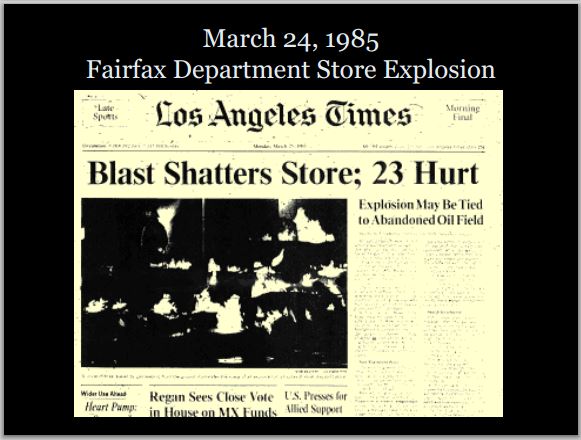
Nature was quickly blamed:
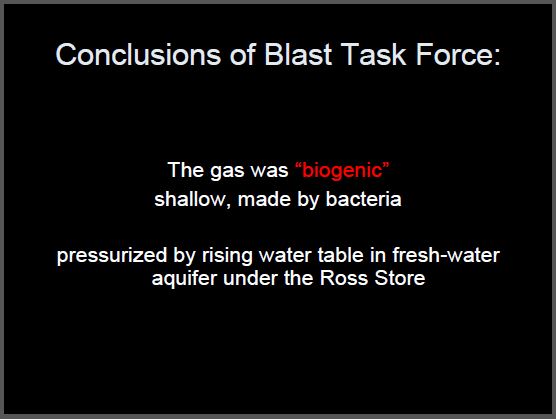
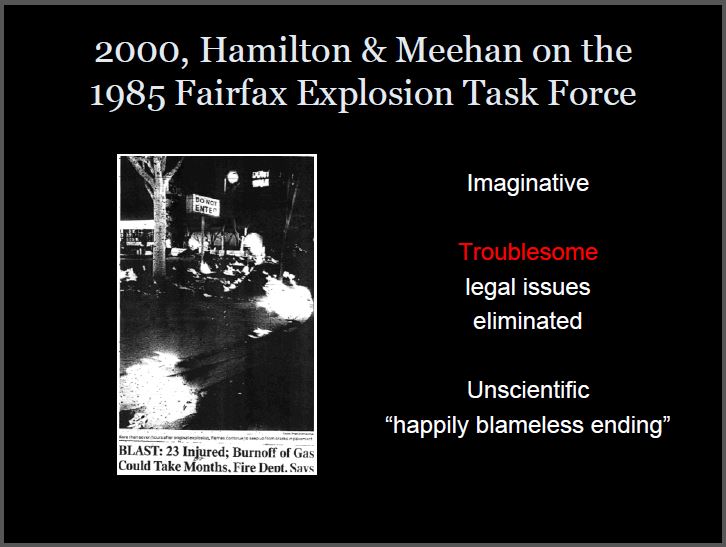
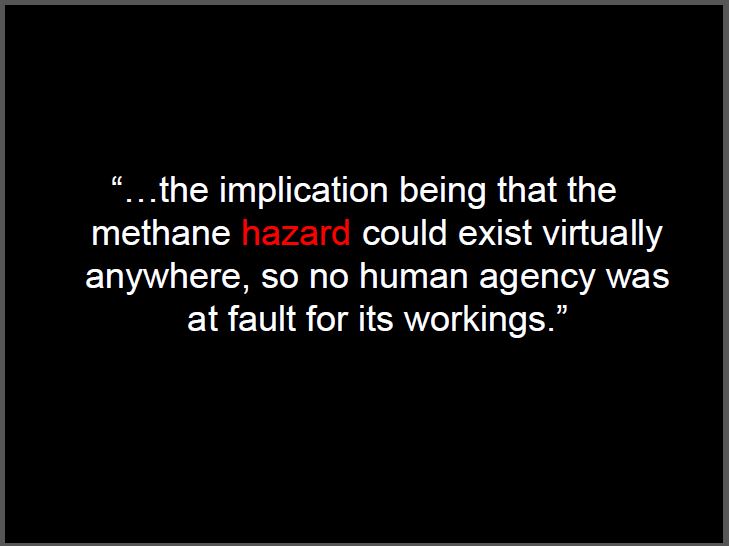
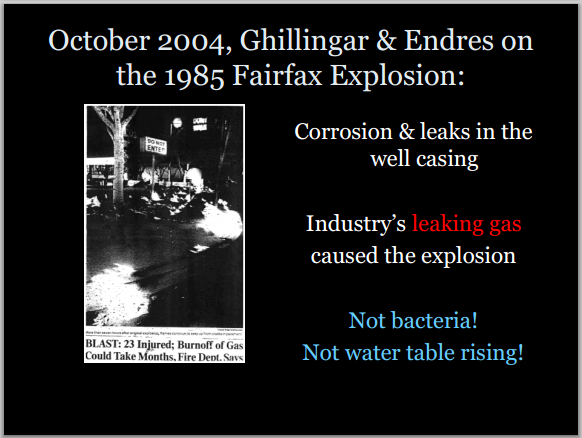
How many have been killed or injured by the oil and gas industry’s leaking methane and how many families and homes destroyed, enabled by fraudulent, cowardly judges, “regulators” and “law” makers? ]

